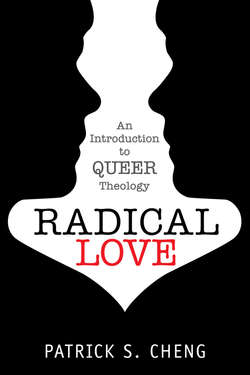Читать книгу Radical Love - Patrick S. Cheng - Страница 18
На сайте Литреса книга снята с продажи.
Queer Tradition
ОглавлениеQueer theology draws upon tradition—that is, church history as well as the teachings of the church over the last two millennia—in creative ways. As in the case of scripture, Christian tradition usually has been seen as being uniformly anti-queer. However, in 1955 Derrick Sherwin Bailey, an Anglican priest, published the groundbreaking historical study Homosexuality and the Western Christian Tradition, which for the first time challenged the traditionally negative view of the Christian theological tradition toward LGBT people.30
Bailey’s book was followed twenty-five years later by Christianity, Social Tolerance, and Homosexuality: Gay People in Western Europe from the Beginning of the Christian Era to the Fourteenth Century, a groundbreaking work by the late John Boswell, an openly gay history professor at Yale University. Boswell argued that Christianity was not uniformly homophobic throughout its early history and that it only became significantly homophobic in the twelfth and thirteenth centuries.31 The book was incredibly influential and even generated a collection of essays on its impact on religious scholarship.32 Prior to his death in 1994, Boswell published Same-Sex Unions in Premodern Europe, which argued that same-sex blessing rites existed in the Christian church for centuries.33
In addition to Boswell, other scholars have reexamined the Christian tradition from the LGBT perspective. These include Bernadette Brooten, a religious studies professor at Brandeis University, who wrote about female homoeroticism in early Christianity—an issue that was largely overlooked by Boswell— in Love Between Women: Early Christian Responses to Female Homoeroticism, and Judith C. Brown, who documented the story of Sister Benedetta Carlini, a lesbian abbess in sixteenth-century Italy, in Immodest Acts: The Life of a Lesbian Nun in Renaissance Italy.34
Finally, a number of LGBT scholars have reexamined the work of classical theologians from a queer perspective. These include Mark D. Jordan, an openly gay theologian at Harvard Divinity School, who examined the work of medieval theologians such as Peter Damian and Thomas Aquinas in The Invention of Sodomy in Christian Theology. Jordan concluded that the theological term “sodomy” was invented by medieval theologians as a result of their fear of the pure erotic state (that is, sexual pleasure without any connection to biological reproduction) and thus created a category by which such a state could be condemned unequivocally by the church.35
Such scholars also include Virginia Burrus, a professor of early church history at Drew University, who has read early Christian stories of saints from a variety of interpretive lenses, including queer theory, in The Sex Lives of Saints: An Erotics of Ancient Hagiography, and who, along with Mark Jordan and Karmen MacKendrick, has examined the themes of seduction and confession in the work of Augustine of Hippo in Seducing Augustine: Bodies, Desires, Confessions.36
By reclaiming the Christian tradition, these queer scholars have located the LGBT experience squarely within the history and teachings of the church. As such, we are able to draw upon this work as a source for constructing our own theologies.
